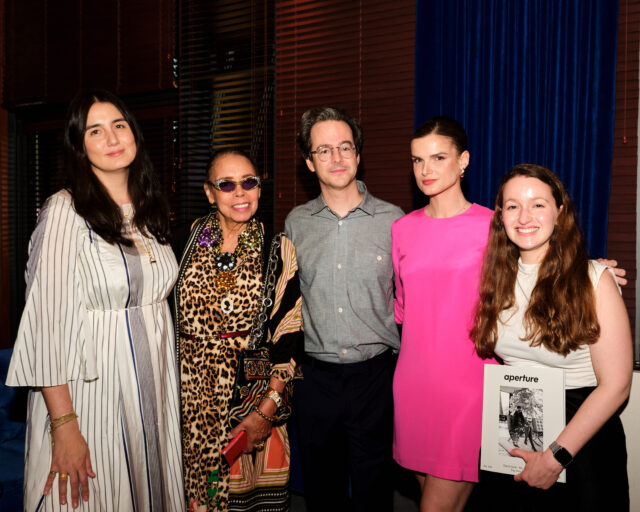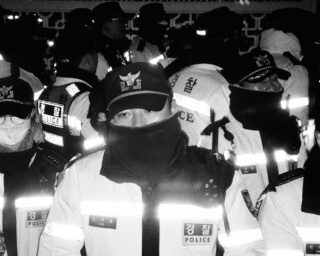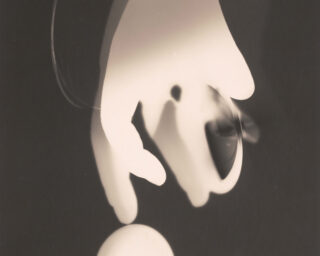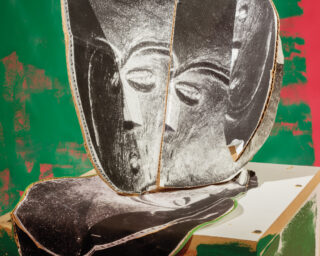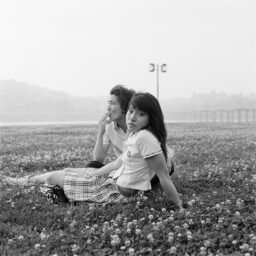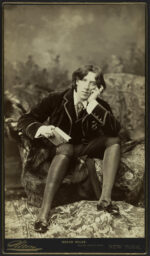Tokyo's Spaces
Tokyo is teeming with independent art spaces that present exhibitions, sell photobooks, and provide platforms for discussing photography. Journalist Kenji Takazawa provides an essential guide for your next photographic tour of Japan’s capital. This online-only piece is published in conjunction with the “Tokyo” issue of Aperture magazine.
This article originally appeared in Issue 11 of the Aperture Photography App.

Shelves at the Photobook Diner Megutama
The most experimental photography in Japan has more often than not been produced by photographers operating outside the mainstream. Before the Second World War, the scene was found in amateur photographer clubs; after the war, independent galleries provided spaces for reflection. Many of these independent galleries were set up in the 1970s by photographers who had studied at the Workshop School run by Shomei Tomatsu and Daido Moriyama, in a bid to overcome the otherwise limited options for presenting their work to the public. At this time, mainstream photography was dominated by galleries that belonged to camera manufacturers. It didn’t help that photography tended to be held in low esteem by the art world. For young photographers bent on innovative photographic expression, they really had no other option but to set up and run their own places. These independent galleries, and the amazingly original work they produced, are important to understanding photography from Japan.
This tradition is still alive in Tokyo today. As someone who makes a living interviewing the main players in Japanese photography, I spend quite a bit of time just walking the streets of the city and checking out the scene. Let me take you on a little photography-themed tour.
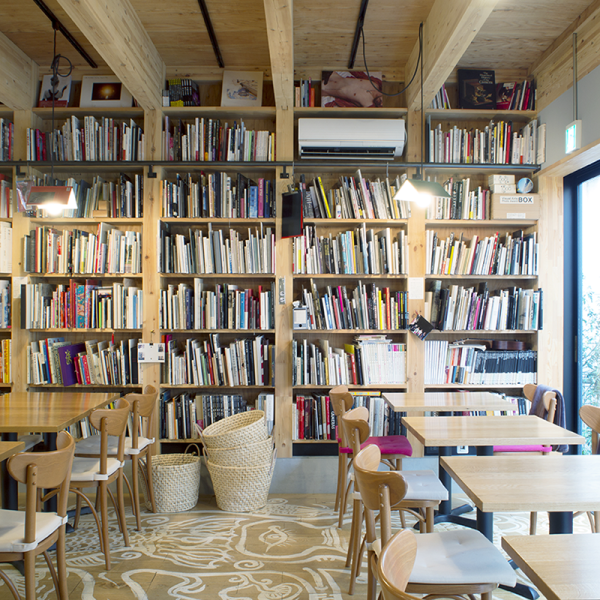
The Photobook Diner Megutama
This café and restaurant serves delicious Japanese home cooking and is located near Ebisu Station. The wooden shelves that run along most of its walls are filled with photography books. The place is run by a trio of people—the photographer Kotaro Iizawa, the artist Tokitama, and Megumiko Okada, who is in charge of the food. What explains such an amazing collection of books? And why have them in a restaurant? “These are all photographic books that Iizawa has been amassing for over thirty years,” Tokitama explained. “We had more books than we could handle at home, so we thought we’d make them available in a collection here.” Iizawa is one of Japan’s most prolific photography critics, author of more than fifty books on photography. In the 1990s he worked as an editor for the photography magazine déjà-vu. “I’ve organized so many events that involved food in one way or another,” Megumiko added. “Food is just such a great way of putting participants at ease and helping things go smoothly—and visitors like it as well. But probably the main reason for this photobook restaurant is that the three of us just love to eat!”
Altogether the collection amounts to some five thousand volumes, including rare photobooks and collections by photographers Daido Moriyama, Nobuyoshi Araki, and Kiyoshi Suzuki. Amazingly, anyone can just take the books off the shelves and start reading—none of the stiff rules of public libraries apply. The idea is for visitors to look at the books, enjoy the photographs, and chat to each other about them. It’s a pretty laid-back place, and probably one of a kind.

POST
Keisuke Nakajima set up this independent bookstore, also located in Ebisu, in 2005. POST sells photography and art books, and most uniquely, features art books from only one or two publishers at time, with the idea of highlighting their particular character and vision. POST’s gallery space shows work by contemporary Japanese and non-Japanese photographers. The Tokyo-based photo-duo Nerhol and the American photographer Todd Hido have both exhibited here. POST has also begun publishing printed editions, for example, by Takashi Homma and Nao Tsuda.

Photographers’ Gallery
Shinjuku is probably what comes to mind when anyone mentions Tokyo street photography, since the area has long featured in the work of Moriyama and Araki. In this area many small independent photography galleries can be found. The Photographers’ Gallery, located in the heart of Shinjuku Nichome, the gay center of Tokyo, is well-known throughout Japan. Photographer Keizo Kitajima has been the driving force behind this gallery since its establishment in 2001. Famous for photobooks such as Photo Express: Tokyo and USSR 1991, Kitajima was also a founding member of CAMP, the legendary independent photographic gallery and magazine publisher. “We photographers have always liked to run our own show. We value our independence, and we like to be in charge of everything we do,” Kitajima said. “CAMP was one expression of this. Being involved in photography means not only creating and showing your own work, and running your own gallery, but holding talks, putting out publications, the whole thing. It means doing it all.”
Photographers’ Gallery publishes its own magazine under the title of Photographers’ Gallery Press. Recent issues have featured little-known areas in the history of photography in Japan; Kenzo Tamoto’s photographs of the reclamation projects of Hokkaido, for example, and reappraisals of photographs of the atomic bombings of Hiroshima and Nagasaki.
This independent bookstore and gallery is located in Shinjuku Gyoen. Sokyusha published Masahisa Fukase’s 1986 Karasu (Ravens), as well as many other photobooks by figures like Moriyama and Miyako Ishiuchi. In much the same way as POST, Sokyusha stocks new publications as well as old ones, and it also releases privately published limited editions. The shelves of this bookstore, carefully curated by the owner and photobook editor Michitaka Ota, speak volumes about the fiercely independent spirit of Japanese photography.

A gathering at Place M
Not far away from Sokyusha Photobook Store is Place M. Established in 1987 by the photographer Masato Seto, known for his photobook Heya/Living Room, Tokyo (1996), as well as the photobook Binran (2008), this must be one of the longest-running galleries in Tokyo. The place is now run by a team of four photographers, including Moriyama. “I was one of the first students to study under Moriyama,” says Masato. “But I wasn’t a member of CAMP. I went to view their exhibitions, but at that time I wasn’t independent. Once I became independent I wanted a place to show my own work, and that’s when Michio Yamauchi and I set up Place M.” Place M is a multifunctional space that combines galleries, darkrooms, a bookstore, and workshops. And of course, it’s also a publisher. Quite often lectures are held here.

Inside Bar Kodoji
Bar Kodoji
A short walk from Place M will bring you to Golden Gai (“Golden Town”). A maze of six or so streets crammed with shanty-style bars and frequented by any number of players involved in theater, film, and photography, in the 1960s and ’70s this was one of the hippest neighborhoods in Tokyo, functioning as a kind of cultural salon. Artists have never been able to count on support from the government here in Japan, so aspiring artists have always had to find their own makeshift meeting places, and here in Golden Gai you could get a cheap drink and a bite to eat. Photographers such as Moriyama and Araki frequented the dives and hangouts of this part of town, so it’s hardly surprising that the streets of Shinjuku feature prominently in their work.
One of the oldest and most famous of Golden Gai bars is Bar Kodoji, established in 1974. As its proprietress Shigeko Ono explained, “I opened this bar at roughly the same period as CAMP was begun. Lots of CAMP members used to come here to drink, and that was the start of the association with photographers.” In 2002 she began using the walls of the bar as a place to display photos, and at one time Moriyama had an annual exhibition here. Last year there were exhibits of work by Koji Onaka and the French photographer Antoine D’Agata. “At first I told him no, but Antoine kept begging and begging till finally I said yes. I’ve known him for close to ten years. I’m kind of nervous about what kind of photos he’ll want to show!” she joked to me last winter.
The shelves here are packed with photobooks that have been given to the bar by various photographers and editors. Among them are some very rare books–the photo-album Kazoku (Family, 1991), for example, by Masahisa Fukase. In fact, Golden Gai was one of Fukase’s favorite neighborhoods, and he used to come here to drink pretty much every night. (He died in 2000.)
That’s just a quick tour of some of the spaces in Tokyo frequented by lovers of photography. Needless to say, countless other places exist, even in Shinjuku alone. Over in Jimbocho, the booklovers’ paradise of a neighborhood, is The White gallery. On the east side of the city, near the Museum of Contemporary Art, is TAP Gallery, which combines a gallery and a bookshop. Even further east, in Higashi Mukojima, is Reminders Photography Stronghold. All of these places combine remarkable book collections, gallery space, and public programming-and they all share an intimate atmosphere, even if the spaces are sometimes cramped and the furnishings less than luxurious. The people who run them live, breathe, eat, and talk photography–it’s the most important thing in their lives.
Translated from Japanese by Lucy North. All photographs by Mie Morimoto.












